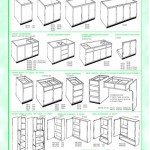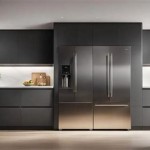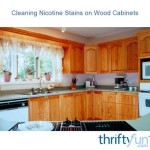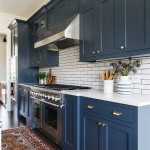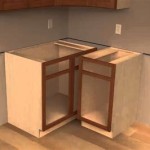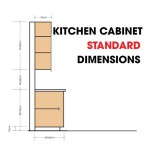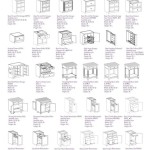Barn Board Kitchen Cabinets: Rustic Charm Meets Modern Functionality
Barn board, reclaimed from old barns and agricultural structures, offers a unique aesthetic for kitchen cabinetry. Its weathered texture and rich history bring a touch of rustic charm to any kitchen design. This article explores the characteristics, advantages, disadvantages, and design considerations of incorporating barn board into kitchen cabinets.
Key Characteristics of Barn Board
Barn board possesses distinct characteristics that set it apart from other wood types used in cabinetry. These characteristics contribute to its rustic appeal and unique visual texture.
- Weathered Patina: Years of exposure to the elements create a unique weathered patina, characterized by variations in color, texture, and even insect markings. This patina gives each piece of barn board its own distinct character.
- Natural Imperfections: Knots, nail holes, and saw marks are common features of barn board, adding to its authentic, rustic appearance.
- Varied Wood Species: Barn board can be sourced from various wood species, including pine, oak, and maple, each offering its unique grain pattern and color tone.
Advantages of Barn Board Kitchen Cabinets
The use of barn board in kitchen cabinetry offers several advantages beyond its aesthetic appeal.
- Durability: Reclaimed wood, having weathered decades of exposure, is often incredibly dense and durable, making it a robust choice for cabinetry.
- Sustainability: Utilizing reclaimed barn board contributes to sustainable building practices by diverting materials from landfills and reducing the demand for newly harvested lumber.
- Unique Character: The inherent variations in color and texture ensure that no two barn board cabinets are exactly alike, adding a unique and personalized touch to the kitchen.
- Design Versatility: Barn board can be incorporated into various kitchen styles, from traditional farmhouse to modern industrial, offering design flexibility.
Disadvantages of Barn Board Kitchen Cabinets
While barn board offers many benefits, it's essential to consider potential drawbacks before incorporating it into a kitchen design.
- Cost: Reclaimed barn board can be more expensive than new lumber due to the labor involved in sourcing, processing, and preparing it for use.
- Maintenance: The textured surface of barn board can be more challenging to clean and maintain than smooth, finished wood surfaces.
- Availability: Finding high-quality barn board in sufficient quantities for a full kitchen remodel can be challenging depending on location and supplier availability.
- Insect Damage: While most reputable suppliers treat the wood to eliminate pests, it's crucial to ensure the barn wood is properly treated to prevent future infestations.
Design Considerations for Barn Board Kitchen Cabinets
Successfully integrating barn board cabinets requires careful planning and consideration of various design elements.
- Cabinet Style: Barn board can be used to create various cabinet styles, from shaker-style doors to more rustic open shelving.
- Hardware Selection: Choosing appropriate hardware, such as wrought iron or black metal, can enhance the rustic aesthetic of the cabinets.
- Countertop Materials: Pairing barn board cabinets with complementary countertop materials, such as soapstone, concrete, or butcher block, creates a cohesive and visually appealing design.
- Color Palette: Carefully consider the overall color palette of the kitchen to ensure that the barn board cabinets complement the other design elements.
- Lighting: Proper lighting can highlight the texture and character of the barn board and create a warm and inviting atmosphere in the kitchen.
Sourcing and Preparing Barn Board
Finding a reliable source for reclaimed barn board is crucial for ensuring quality and sustainability. Preparation involves several key steps.
- Reputable Suppliers: Research and select suppliers who specialize in reclaimed wood and adhere to sustainable practices.
- Inspection and Selection: Carefully inspect the boards for structural integrity, insect damage, and desired aesthetic qualities.
- Cleaning and Treatment: The barn board must be thoroughly cleaned and treated to eliminate pests and stabilize the wood for use in cabinetry.
- Milling and Finishing: The wood is then milled to the desired dimensions and finished with a protective sealant to preserve its character and enhance its durability.
Integrating Barn Board Accents
For those hesitant to commit to full barn board cabinetry, incorporating barn board accents can still achieve a touch of rustic charm.
- Open Shelving: Using barn board for open shelving provides a cost-effective way to introduce the material's texture and character.
- Range Hood: A barn board range hood can serve as a striking focal point in the kitchen.
- Island Accents: Incorporating barn board into the kitchen island can add visual interest and tie the design together.
Long-Term Care and Maintenance
Maintaining the beauty and durability of barn board cabinets requires proper care and cleaning.
- Regular Dusting: Dusting with a soft cloth will help prevent buildup and maintain the wood's appearance.
- Gentle Cleaning: Clean spills promptly with a slightly damp cloth and avoid harsh chemicals that could damage the finish.
- Reapplication of Finish: Periodically reapplying a protective sealant will help preserve the wood and maintain its resistance to moisture and wear.

Reclaimed Wood Kitchen Cabinets In Weathered Gray Denmark

Barn Wood Kitchens

Reclaimed Barnwood Kitchen Cabinets Vienna Woodworks

Barn Wood Kitchens
Reclaimed Barnwood Kitchen Cabinets Vienna Woodworks

Barnwood Kitchen Cabinets Benedict Antique Lumber And Stone Reclaimed Wood For Barn

Handmade Rustic Upper Cabinet Reclaimed Barn Wood W Tin Denmark

Simply Country Life Cabin Chronicles Part 12 Reclaimed Barnwood Kitchen Cabinets

Barn Wood Kitchens

Reclaimed Barnwood Kitchen Cabinets Vienna Woodworks
Related Posts

